M-numbers
Data is displayed for academic year: 2023./2024.
Lecturers
Course Description
M-numbers is a theory formalized by dr.sc. Miroslav Šare (1918-2005), professor from this Faculty (ETF, 1946-1982), which he has discovered in 1957. while studying electrical networks. The discovery has enabled representation of CRL networks with a sequence of strings, where each electrical element is presented as a pair of symbols from a three-valued alphabet. Prof. Šare has observed that connecting bipolar elements in serial and parallel connections contains algebraic operations and has observed their connection with network topology and logic. Following several decades of persistent and secretive work, prof. Šare has succeeded in generalization of his theory to an arbitrary number of elements (which do not necessarily need to have its physical interpretation) and has published his work in 2000. in book entitled “Jorbologija” (“jorb” is obtained by reading the word “broj” backwards; with remark that “broj” is a Croatian word for number). Fifteen years later, the lecturer of this course and his coworkers have managed to connect M-logic with semantics of natural language and have published significant results in the field. Since the behavior of CRL electrical circuits has its equivalents in other scientific fields (e.g., in mechanics, thermodynamics, fluid mechanics) and since CRL circuits are often used as a modelling framework for simulations in these diverse fields, one of the goals of this course is to extend application of M-theory to new fields. To achieve this goal, in the course we study three larger topics: a) application of M-theory in semantic of natural language, b) topology of electrical networks and isomorphism using M-numbers, c) algebraic M-structures in the theory of lattices.
Study Programmes
University undergraduate
[FER3-HR] Computing - study
Skills
(5. semester)
Skills
(5. semester)
[FER2-HR] Computer Engineering - module
Skills
(5. semester)
[FER2-HR] Computer Science - module
Skills
(5. semester)
[FER2-HR] Control Engineering and Automation - module
Skills
(5. semester)
[FER2-HR] Electrical Power Engineering - module
Skills
(5. semester)
[FER2-HR] Electronic and Computer Engineering - module
Skills
(5. semester)
[FER2-HR] Electronics - module
Skills
(5. semester)
[FER2-HR] Information Processing - module
Skills
(5. semester)
[FER2-HR] Software Engineering and Information Systems - module
Skills
(5. semester)
[FER2-HR] Telecommunication and Informatics - module
Skills
(5. semester)
[FER2-HR] Wireless Technologies - module
Skills
(5. semester)
University graduate
[FER3-HR] Computing - study
Skills
(1. semester)
[FER3-HR] Electrical Engineering and Information Technology - study
Skills
(1. semester)
[FER3-HR] Information and Communication Technology - study
Skills
(1. semester)
[FER2-HR] Computer Engineering - profile
Skills
(1. semester)
[FER2-HR] Computer Science - profile
Skills
(1. semester)
[FER2-HR] Control Engineering and Automation - profile
Skills
(1. semester)
[FER2-HR] Electrical Engineering Systems and Technologies - profile
Skills
(1. semester)
[FER2-HR] Electrical Power Engineering - profile
Skills
(1. semester)
[FER2-HR] Electronic and Computer Engineering - profile
Skills
(1. semester)
[FER2-HR] Electronics - profile
Skills
(1. semester)
[FER2-HR] Information Processing - profile
Skills
(1. semester)
[FER2-HR] Software Engineering and Information Systems - profile
Skills
(1. semester)
[FER2-HR] Telecommunication and Informatics - profile
Skills
(1. semester)
[FER2-HR] Wireless Technologies - profile
Skills
(1. semester)
Forms of Teaching
Lectures
classic lecture with slides
Examscolloquium, seminar paper, homework https://fsb.scriptrunner.carnet.hr/
Exercisesdemonstrations in computer classrooms
Seminarsseminar paper
E-learninghttp://m-system.fsb.hr/mSistem
Grading Method
| Continuous Assessment | Exam | |||||
|---|---|---|---|---|---|---|
| Type | Threshold | Percent of Grade | Threshold | Percent of Grade | ||
| Homeworks | 0 % | 25 % | 0 % | 25 % | ||
| Seminar/Project | 0 % | 25 % | 0 % | 25 % | ||
| Attendance | 0 % | 20 % | 0 % | 0 % | ||
| Mid Term Exam: Written | 0 % | 15 % | 0 % | |||
| Final Exam: Written | 0 % | 15 % | ||||
| Exam: Written | 0 % | 50 % | ||||
Week by Week Schedule
- M-system as connection between electrical networks and natural languages
- Foundation of m-systems and m-spaces (carriers of jorb structures)
- Basic permutations and quasi ordering of m-spaces
- Bases and morphisms of m-structure (kernels and hulls of 'jorbs')
- Relations of order and congruence, algebra of residual classes
- Homomorphism of lattices and m-structures
- Midterm exam - algebraic foundations
- Partition of m-space in five-member lattice
- Generalization of algebra of statements
- Tautologies and rules of conclusion making
- Multivalued M-logic and its application in semantic analysis of language
- M-continuum and M-topology
- M-graphs
- CRL networks
- Final exam – logic, topology and applications of M-systems
Literature
For students
General
ID 214704
Winter semester
4 ECTS
L1 English Level
L2 e-Learning
30 Lectures
10 Seminar
10 Exercises
0 Laboratory exercises
0 Project laboratory
0 Physical education excercises
Grading System
90 Excellent
75 Very Good
60 Good
50 Sufficient


 Pristupačnost
Pristupačnost